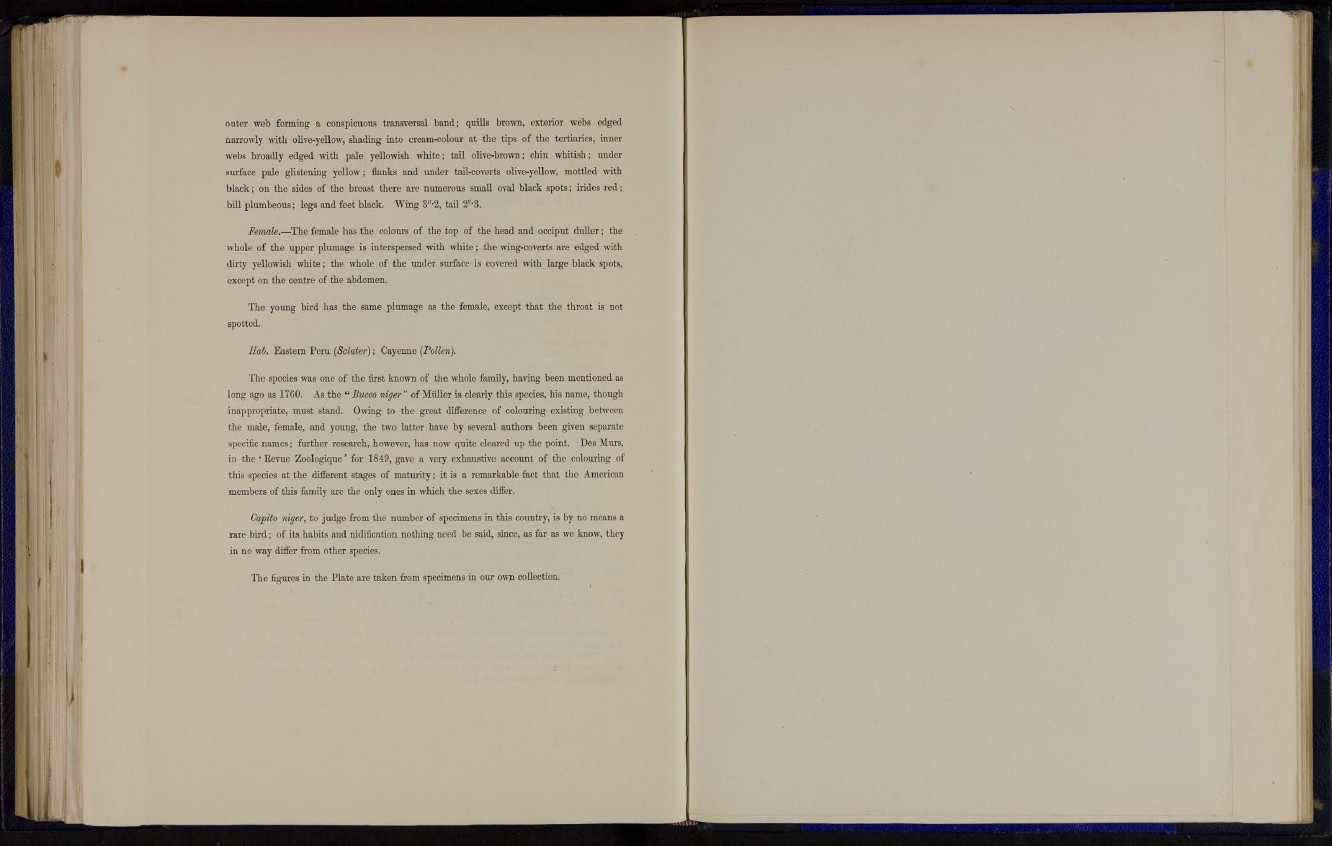
outer web forming a conspicuous transversal band; quills brown, exterior webs edged
narrowly with olive-yellow, shading into cream-colour at the tips of the tertiaries, inner
webs broadly edged with pale yellowish white; tail olive-brown; chin whitish; under
surface pale glistening yellow; flanks and under tail-coverts olive-yellow, mottled with
black; on the sides of the breast there are numerous small oval black spots; irides red;
bill plumbeous; legs and feet black. Wing 3"-2, tail 2"-3.
Female.—The female has the colours of the top of the head and occiput duller; the
whole of the upper plumage is interspersed with white; the wing-coverts are edged with
dirty yellowish white; the whole of the under surface is covered with large black spots,
except on the centre of the abdomen.
The young bird has the same plumage as the female, except that the throat is not
spotted.
llab. Eastern Peru (Sclater); Cayenne (Pollen).
The species was one of the first known of the whole family, having been mentioned as
long ago as 1760. As the " Bucco niger'" of Miiller is clearly this species, his name, though
inappropriate, must stand. Owing to the great difference of colouring existing between
the male, female, and young, the two latter have by several authors been given separate
specific names; further research, however, has now quite cleared up the point. Des Murs,
in the ' Revue Zoologique' for 1849, gave a very exhaustive account of the colouring of
this species at the different stages of maturity; it is a remarkable fact that the American
members of this family are the only ones in which the sexes differ.
Capito niger, to judge from the number of specimens in this country, is by no means a
rare bird; of its habits and nidification nothing need be said, since, as far as we know, they
in no way differ from other species.
The figures in the Plate are taken from specimens in our own collection.